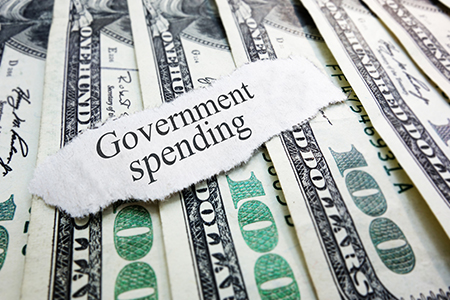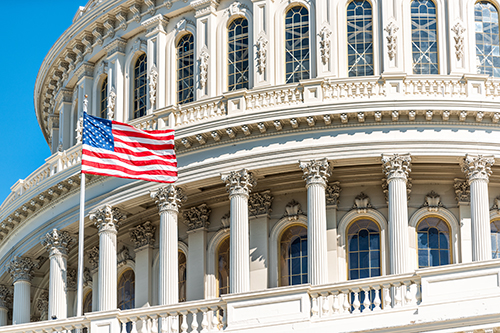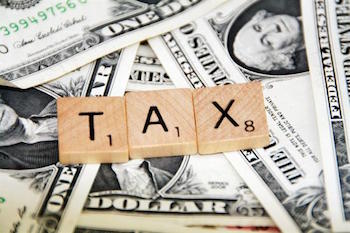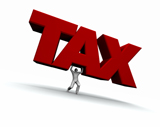Tax Reform
 The Republican tax proposal is now public and while the overall plan will prove beneficial to the economy many challenges remain. The individual tax rates will lower middle class taxes by doubling standard deductions and lowering marginal tax rates overall for individuals. On the negative side, it leaves in place higher marginal tax rates for the upper incomes including the Obamacare surtax. Another aspect of the plan, the removal of the deductions for state and local government while limiting property tax deductions, will add to the tax burden of the upper class. While Republicans did not increase the marginal tax rates on businesses, they did not lower them either. Republicans chose not to lower the tax rates so they would not be accused of passing tax cuts for the rich.
The Republican tax proposal is now public and while the overall plan will prove beneficial to the economy many challenges remain. The individual tax rates will lower middle class taxes by doubling standard deductions and lowering marginal tax rates overall for individuals. On the negative side, it leaves in place higher marginal tax rates for the upper incomes including the Obamacare surtax. Another aspect of the plan, the removal of the deductions for state and local government while limiting property tax deductions, will add to the tax burden of the upper class. While Republicans did not increase the marginal tax rates on businesses, they did not lower them either. Republicans chose not to lower the tax rates so they would not be accused of passing tax cuts for the rich.
Heritage Foundation David Burton noted, “While only 1 of every 150 taxpayers actually pays the top rate, more than 1 of every $5 of taxable income is subject to that tax rate. That means a lot of economic activity is affected by the top rate, and lowering it would have a significant and positive impact on investment, productivity, incomes, and job growth in the U.S…Maintaining a high top rate for wealthy Americans may make the plan more politically palatable, more appealing to average Americans, and help reduce the alleged “costs” of the tax reform plan. In reality, though, it would not result in nearly as much revenue as static estimates project, and it would limit the plan’s ability to maximize job growth and boost incomes for everyday Americans.”
Burton’s point is that while less than 1% pay the top rate, they provide significant taxable income and they provide much economic activity, so lowering it will increase economic activity including more investment that leads to incomes and job growth. Burton noted that the reason for keeping the higher marginal rates on the wealthy was to make the tax plan more acceptable to Middle Class voters and limit the charges of Republicans favoring tax cuts for the rich.
This is the weakness of the plan as far as promoting growth but lowering the corporate tax rates does indeed promote growth. Lowering the rates from 35% to 20% will increase economic opportunity. David Burton noted, “Permanently lowering the corporate tax to 20 percent is the single most important pro-growth change included in the Tax Cuts and Jobs Act…U.S. businesses currently face the highest statutory corporate tax rates in the developed world. The United States ranks consistently as one of the worst in business tax environments in the world…Over the past few decades, countries around the world have steadily lowered their corporate tax rates, leaving American businesses behind.” This bill will allow American Corporations to be more competitive with their competition worldwide and will give incentive to American companies to stay in the United States.
There are enough economic studies to show that this will lead to economic growth and increased income for American workers. President Council of Economic Advisors released a report that showed that workers’ wages increases could be $4000 and this was reinforced by research from Boston University that updating the tax code adds $3500 to American family income. Another study from Tax Foundation states that family income could increase by $4000. Marquette University shows that tax reform could increase wages for American families by as much of $14,000. As David Burton noted, “Tax reform resulting in wage increases is exactly what happened over the past decade and half in Canada. In 2007, Canadians began lowering their corporate tax rate, and wages grew significantly faster in Canada than in other comparable countries as a result.”
There is more than enough data to show that lowering the corporate rates will lead to economic growth, and over the past decade, there have been bipartisan efforts to lower corporate and individual tax rates and that includes the Obama commission headed by Erskine Bowles and Alan Simpson in 2010. (This commission actually proposed a lower tax rates than the present Republican plan and since 2009, Democrats like Ron Wyden have Tax reform plans that lower the marginal tax rates for the top income! It appears that the Republican plan is the most Democrat like when it comes to taxing the rich!)
Trump’s Economic Advisor Kevin Hassett noted “We’ve put out two studies using four different methods to estimate the impact on the typical American household using the proposal of the 20 percent corporate rate cut. We have not yet analysed the individual side, the big middle-class tax cut, which will also be a big positive in the end I’m sure when we look at it…On the corporate side, we estimate that the typical family will see a $4,000 pay raise because of the tax bill. The pay raise is not weird mystical magic at all. It’s just hard science…There is this big literature that looks at how other countries have fared when they’ve done a similar thing. That literature has a wide range of estimates, but really on the conservative end, I think that literature suggested that families will see the $4,000 pay raise when this bill becomes law.”
The question is what is the alternative presented by Democrats? Congressman David Bratt gave the answer, “By the way, no one’s reported this, so you get an exclusive here. The Democrat side, they put in a progressive budget two weeks ago. One hundred and seven votes, so it’s substantial. They raised taxes $10 trillion. They raised spending $11 trillion. They have more debt in deficits than we do after we cut taxes.” The Democrat alternative is higher taxes and more spending, with even higher deficits projected than the Republican plan.
If Republicans can get a growth oriented tax plan enacted and voters start seeing the results, Republicans can clean up in the 2018 election.








